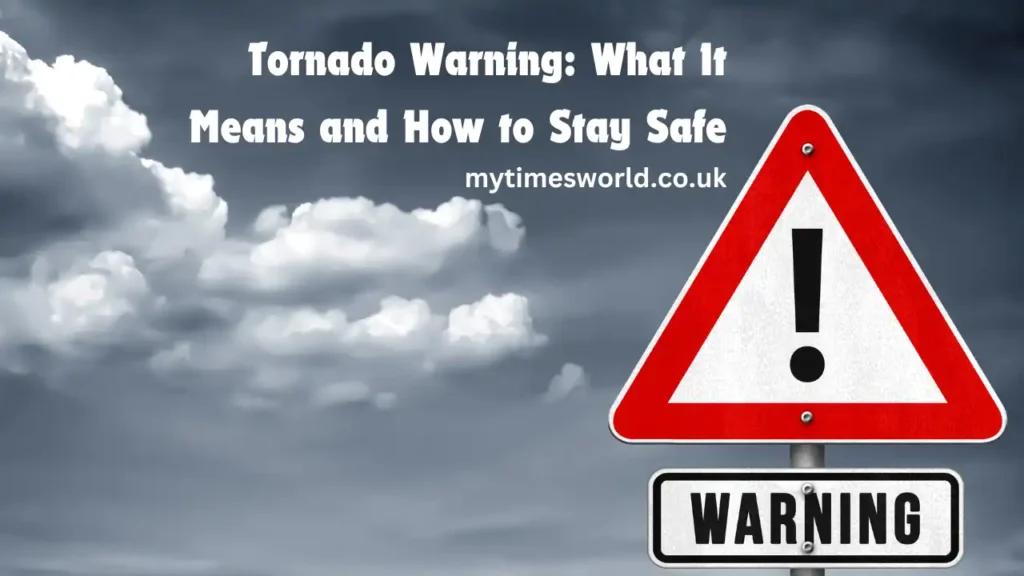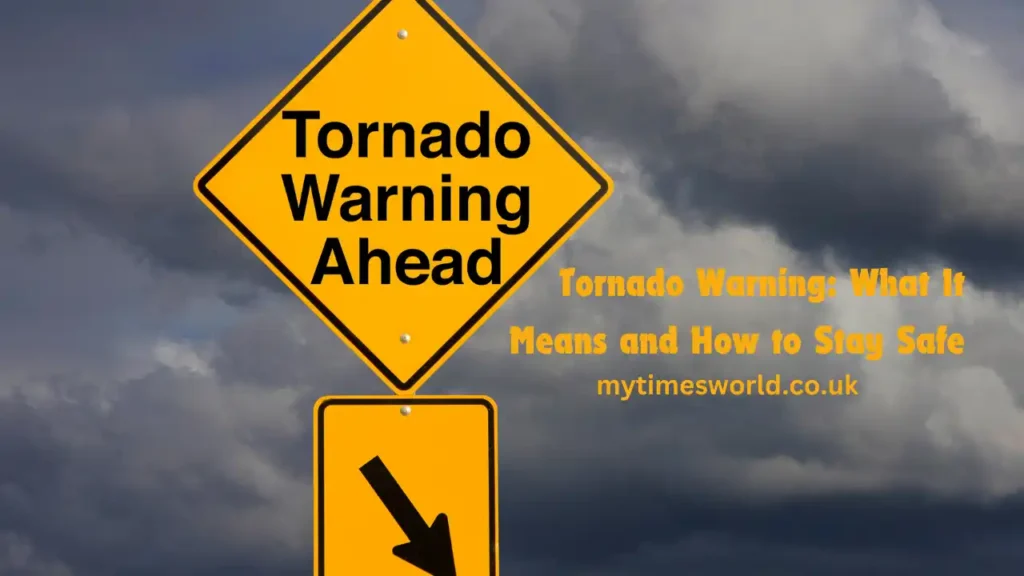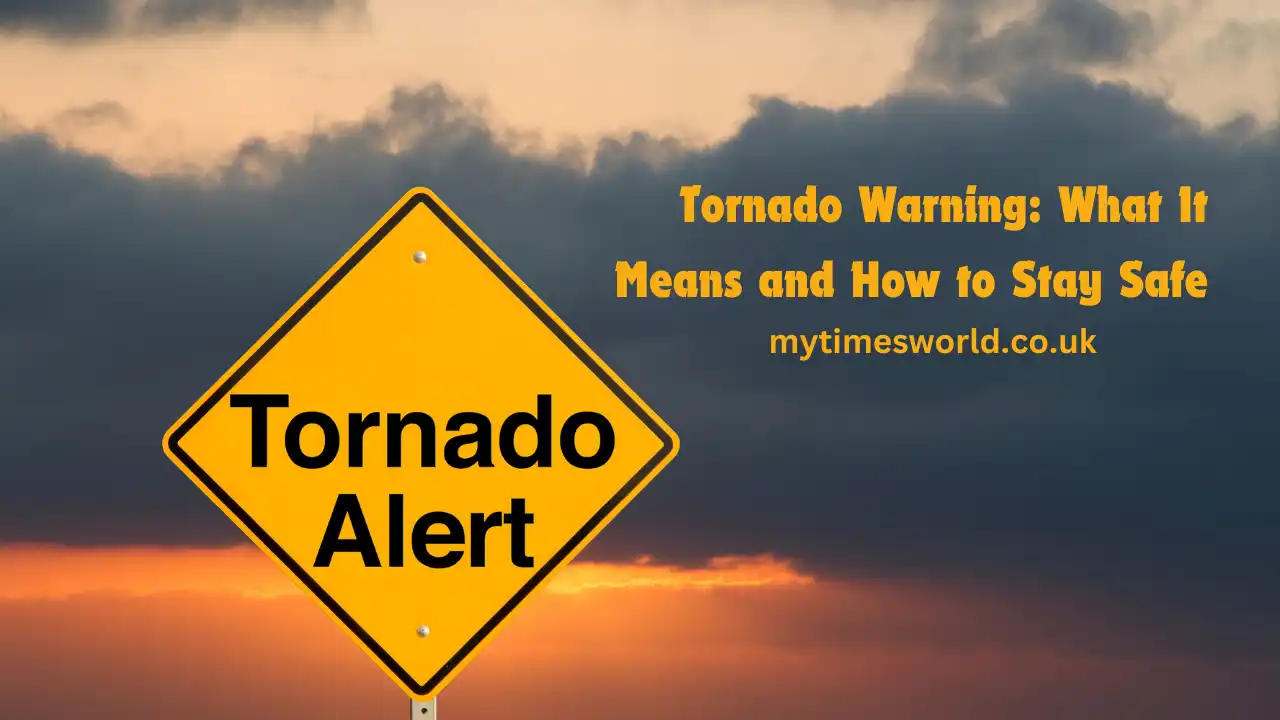Introduction
Tornadoes are incredibly powerful natural disasters that can strike with little warning, causing devastation in their path. Understanding tornado warnings, what they mean, and how to react can be the difference between life and death. In this guide, we’ll break down everything you need to know about tornado warnings and provide essential safety tips that anyone can follow.
What is a Tornado?
A tornado is a rapidly rotating column of air that extends from a thunderstorm to the ground. Tornadoes can vary in size and intensity, with wind speeds ranging from 65 mph to over 300 mph. These violent storms are capable of destroying buildings, uprooting trees, and launching debris like missiles.
Tornadoes form when warm, moist air meets cold, dry air, creating instability in the atmosphere. When these conditions are right, a thunderstorm can develop into a supercell, which may eventually spawn a tornado. The swirling winds of a tornado can travel over land for miles, leaving a trail of destruction in their wake.
Difference Between a Tornado Watch and a Tornado Warning
What is a Tornado Watch?
A tornado watch is issued when weather conditions in a particular area are favorable for the development of tornadoes. It means that a tornado could form, but it hasn’t been spotted yet. A tornado watch typically covers a large geographical area and can last for several hours.
What is a Tornado Warning?
A tornado warning, on the other hand, is much more serious. It means that a tornado has been sighted or detected on radar. A tornado warning is usually more localized, focusing on specific towns or counties. When a tornado warning is issued, you need to take shelter immediately.
Key Differences Between the Two
- Tornado Watch: Be alert, conditions are favorable for tornadoes.
- Tornado Warning: A tornado has been detected, take action immediately.
Understanding the difference between these two alerts is crucial for knowing when to prepare and when to act.
How Tornado Warnings are Issued
Tornado warnings are typically issued by government agencies like the National Weather Service (NWS) in the United States. These agencies monitor weather patterns using advanced radar systems and reports from trained storm spotters. When a tornado is spotted or indicated by radar, a warning is broadcast via television, radio, and mobile phone alerts.
Some regions also have outdoor warning sirens that sound when a tornado warning is issued. These sirens are a last-minute alert to take cover, so it’s important to pay attention to the warning systems in your area.
Signs of a Tornado

While tornadoes can form rapidly, there are certain signs that can indicate a tornado is on the way. Being able to recognize these signs can give you valuable time to seek shelter.
- Dark, greenish sky: A strange color in the sky, especially green, can indicate a powerful storm.
- Large hail: Tornadoes are often preceded by large hailstones.
- Loud, continuous roar: Tornadoes often make a sound similar to a freight train.
- Rotating, low-lying cloud: A funnel-shaped cloud descending from the sky is a clear sign of a potential tornado.
If you notice any of these signs, take shelter immediately, even if a warning hasn’t been issued yet.
What to Do When a Tornado Warning is Issued
When a tornado warning is issued, your safety should be your top priority. Here’s what you need to do:
- Take Shelter Immediately: The best place to be during a tornado is in a storm cellar, basement, or an interior room on the lowest floor of a sturdy building.
- Stay Informed: Keep a battery-powered weather radio or mobile phone handy to receive updates. Avoid using electrical devices plugged into the wall during storms.
- Protect Yourself: Cover your head and neck with your arms and, if possible, put on a helmet or sturdy shoes. This helps protect against flying debris.
Tornado Shelter: What You Need to Know
The safest place during a tornado is a designated storm shelter or a basement. If you don’t have access to either, choose a small, windowless room on the lowest level of your home, like a bathroom or closet. Stay as far away from windows as possible to avoid being injured by flying glass.
What to Avoid During a Tornado
- Avoid Windows: Flying glass can cause serious injuries.
- Avoid Mobile Homes: They offer little protection during a tornado. If you’re in a mobile home, leave and find a sturdier structure nearby.
- Don’t Stay in a Car: Vehicles can easily be flipped or lifted by tornado winds.
Indoor Tornado Safety Tips
- Stay Low: The lower you are, the safer you’ll be. Basements or storm cellars are ideal.
- Close All Doors: Interior doors can act as barriers against flying debris.
- Use Cushions or Mattresses: Place soft items over your body to help absorb the impact of any debris.
Outdoor Tornado Safety Tips
If you’re caught outside when a tornado is approaching, follow these steps:
- Find Shelter: Look for a sturdy building to take cover. If no building is available, lie flat in a low area such as a ditch.
- Cover Your Head: Use your arms or any available object to protect your head from flying debris.
Tornado Safety for People in Vehicles

Being in a car during a tornado can be extremely dangerous. Here’s what to do if you’re driving and a tornado is nearby:
- Pull Over: Find a safe place to stop, ideally away from trees and power lines.
- Leave Your Vehicle: Get to a low-lying area like a ditch and cover your head.
- Avoid Overpasses: Overpasses can act like wind tunnels, making the winds stronger.
How to Prepare for Tornadoes in Advance
Preparation is key to tornado safety. Here’s how to get ready:
- Create a Safety Plan: Identify safe places in your home and discuss the plan with family members.
- Prepare an Emergency Kit: Include items like water, non-perishable food, first-aid supplies, a flashlight, and a battery-powered radio.
What to Avoid During a Tornado
- Don’t Panic: Staying calm will help you make better decisions.
- Avoid Open Areas: Large open spaces are more dangerous during a tornado.
- Don’t Ignore Warnings: If a tornado warning is issued, take it seriously and seek shelter immediately.
After the Tornado: What to Do
Once the tornado has passed, it’s important to assess your situation carefully:
- Check for Injuries: Provide first aid if necessary and call emergency services if anyone is seriously hurt.
- Inspect Your Home: Look for structural damage, gas leaks, and other hazards. If your home is unsafe, leave and seek shelter elsewhere.
Common Tornado Myths Debunked
- Myth: Opening windows will reduce pressure and prevent damage.
- Fact: Opening windows can actually let dangerous winds into your home.
- Myth: Tornadoes never hit big cities.
- Fact: Tornadoes can strike anywhere, including urban areas.
- Myth: Highway overpasses are safe shelter.
- Fact: Overpasses can amplify wind speeds and are not safe during tornadoes.
Conclusion
Tornadoes are dangerous and unpredictable, but by understanding tornado warnings and taking appropriate safety measures, you can protect yourself and your family. Always stay informed, have a plan, and be ready to act when a tornado warning is issued.
FAQs
- What is the difference between a tornado watch and a warning?
A tornado watch means conditions are favorable for tornadoes, while a warning means a tornado has been sighted or detected. - Can tornadoes happen without warning?
While rare, tornadoes can sometimes form without a warning, which is why it’s essential to stay alert during severe weather. - What should I include in a tornado emergency kit?
A tornado emergency kit should include water, non-perishable food, first-aid supplies, a flashlight, batteries, and a weather radio. - How long does a tornado warning typically last?
A tornado warning usually lasts about 30 minutes but can be extended if the storm continues to be dangerous. - What are the safest places to hide during a tornado?
The safest places are basements, storm cellars, or small interior rooms on the lowest level of your home.







Be First to Comment